| Listing 1 - 9 of 9 |
Sort by
|
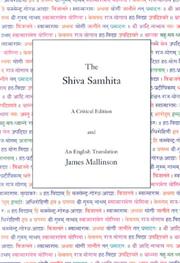
ISBN: 9780971646650 0971646651 9780971646643 0971646643 Year: 2007 Publisher: Woodstock, NY: YogaVidya.com,
Abstract | Keywords | Export | Availability | Bookmark
 Loading...
Loading...Choose an application
- Reference Manager
- EndNote
- RefWorks (Direct export to RefWorks)
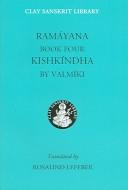
ISBN: 0814757014 0814757073 9780814757079 9780814757017 Year: 2005 Publisher: New York: New York University press,
Abstract | Keywords | Export | Availability | Bookmark
 Loading...
Loading...Choose an application
- Reference Manager
- EndNote
- RefWorks (Direct export to RefWorks)
Budhasvamin tells the astonishing epic tale of the youthful exploits of prince Naraváhanadatta. It is indeed a great story, as its Sanskrit title declares. Epic in scope and scale, it has everything that a great story should: adventure, romance, suspense, intrigue, tragedy and comedy. The reader is taken from royal palaces to flying sorcerers’ mountain fastnesses via courtesans’ bedrooms and merchant ships. The frame story narrates Naraváhanadatta’s progress culminating in his enthronement as Emperor of the Sorcerers, winning twenty-six wives along the way. Unfortunately, the surviving manuscripts of the text break off while he is in pursuit of his sixth wife. Volume One’s adventures end with his lute contest and marriage to Gandhárvadatta. The fast and witty narrative eschews lengthy description and provides fascinating insights into ancient India. Volume two of Budhasvamin’s The Emperor of the Sorcerers begins with the merchant Sanudasa telling the story, an epic in itself, of how he acquired Gandhárvadatta, his daughter whose hand Naraváhanadatta, the hero of the book, has just won in a lute contest. In this and the tales of how the prince comes by his next two wives, the reader’s tour of ancient India continues, extending to the far south and beyond, to magical islands of gold, before heading north to Varánasi. Along the way, we learn of, among other things, flying sorcerers, transvestite ascetics clad in skulls, the finer points of gambling with dice, the perils of trading by sea, the rivalry between fate and human effort and the difference between town and country mice. Sadly, the surviving manuscripts of the texts break off while our hero is in pursuit of only the sixth of his twenty-six wives.
Book
ISBN: 9780241253045 0241253047 Year: 2017 Publisher: [London] UK: Penguin books,
Abstract | Keywords | Export | Availability | Bookmark
 Loading...
Loading...Choose an application
- Reference Manager
- EndNote
- RefWorks (Direct export to RefWorks)
Yoga is hugely popular around the world today, yet until now little has been known of its roots. This book collects, for the first time, core teachings of yoga in their original form, translated and edited by two of the world's foremost scholars of the subject. It includes a wide range of texts from different schools of yoga, languages and eras: among others, key passages from the early Upanisads and the Mahabharata , and from the Tantric, Buddhist and Jaina traditions, with many pieces in scholarly translation for the first time. Covering yoga's varying definitions across systems, models of the esoteric and physical bodies, and its most important practices, such as posture, breath control, sensory withdrawal and meditation, Roots of Yoga is a unique and essential source of knowledge.
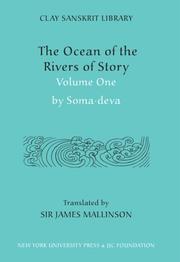
ISBN: 0814795587 9780814740804 0814740804 9780814795583 9780814788165 0814788165 Year: 2009 Publisher: New York: New York University press,
Abstract | Keywords | Export | Availability | Bookmark
 Loading...
Loading...Choose an application
- Reference Manager
- EndNote
- RefWorks (Direct export to RefWorks)
Somadeva composed his “Ocean of the Rivers of Story” in Kashmir in the eleventh century CE. It is a vast collection of tales based on “The Long Story,” a now lost (and perhaps legendary) repository of Indian fables, in which prince Nara·váhana·datta wins twenty-six wives and becomes the emperor of the sorcerers. There are tales within tales within tales. By turns funny, exciting, or didactic, they illustrate points within the frame narrative or are told simply to provide entertainment for the protagonists. Its twenty thousand plus verses are written in simple but elegant Sanskrit and it has long been used as an introductory text for students of the language.
Ba§xn§xĐa --- Tales --- Ba§x;n§x;Đa --- Bāṇa --- Tales - India --- Bāṇa - Translations into English
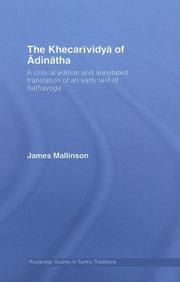
ISBN: 0415391156 9780415391153 Year: 2007 Publisher: Abingdon: Routledge,
Abstract | Keywords | Export | Availability | Bookmark
 Loading...
Loading...Choose an application
- Reference Manager
- EndNote
- RefWorks (Direct export to RefWorks)
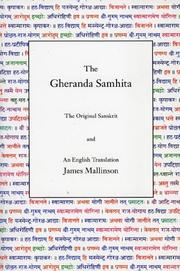
ISBN: 0971646635 9780971646629 9780971646636 0971646627 Year: 2004 Publisher: Woodstock, N.Y.: YogaVidya.com,
Abstract | Keywords | Export | Availability | Bookmark
 Loading...
Loading...Choose an application
- Reference Manager
- EndNote
- RefWorks (Direct export to RefWorks)
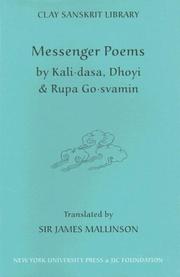
ISBN: 0814757146 9780814757147 Year: 2006 Publisher: New York: New York University press,
Abstract | Keywords | Export | Availability | Bookmark
 Loading...
Loading...Choose an application
- Reference Manager
- EndNote
- RefWorks (Direct export to RefWorks)
Kalidasa’s fifth-century CE “Cloud Messenger” is a beautiful and pure expression of an exiled lover’s love. That first messenger poem is imitated in the twelfth century in the “Wind Messenger,” its sentiment diluted with Dhoyi’s praise of his royal patron King Lákshmana·sena of Gauda (Bengal), and the “Swan Messenger,” in which romantic and religious love are combined, to produce a poem that shines with the intensity of love for Krishna, the godhead. Sanskrit Messenger poems evoke the pain of separated sweethearts through the formula of an estranged lover pleading with a messenger to take a message to his or her beloved. The plea includes a lyrical description of the route the messenger will take and the message itself. The first was the “Cloud Messenger,” composed by Sanskrit’s finest poet, Kali·dasa, in the fifth century CE. The next was its imitator, the “Wind Messenger,” composed in praise of King Lákshmana·sena of Gauda (Bengal) in the twelfth century by Dhoyi, one of his court poets. Numerous more followed, including the third in the CSL selection, the sixteenth-century “Swan Messenger,” composed in Bengal by Rupa Gosvámin, a devotee of Krishna.
Book

ISBN: 9781400839933 Year: 2011 Publisher: Princeton, NJ
Abstract | Keywords | Export | Availability | Bookmark
 Loading...
Loading...Choose an application
- Reference Manager
- EndNote
- RefWorks (Direct export to RefWorks)
Digital

ISBN: 9781400839933 9780691140865 Year: 2011 Publisher: Princeton, N.J. Princeton University Press
Abstract | Keywords | Export | Availability | Bookmark
 Loading...
Loading...Choose an application
- Reference Manager
- EndNote
- RefWorks (Direct export to RefWorks)
| Listing 1 - 9 of 9 |
Sort by
|

 Search
Search Feedback
Feedback About UniCat
About UniCat  Help
Help News
News